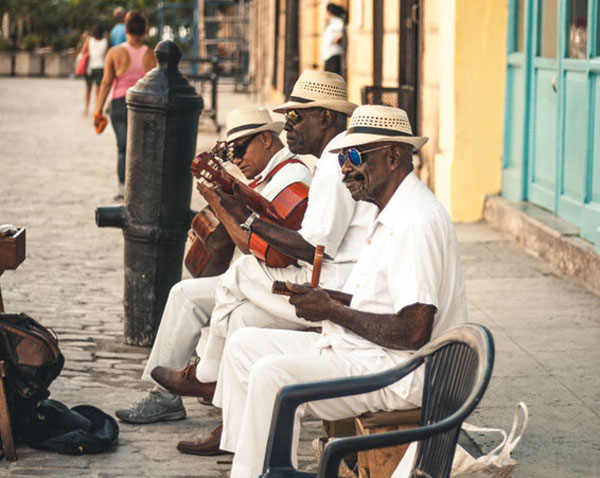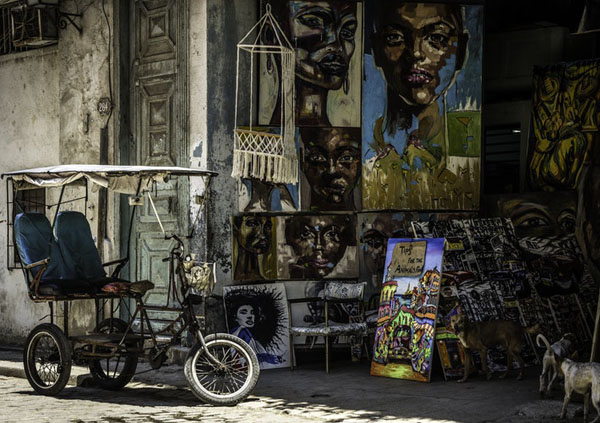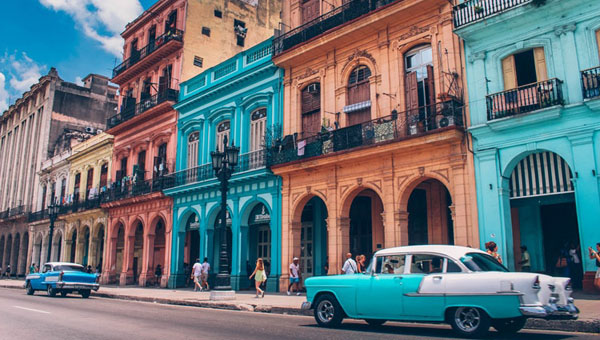By Monica Eileen Patterson
Guest Writer
 This spring break, thousands of Canadian college and university students will head south to Cuba. They are among the more than one million Canadians who will flock to Cuba this winter to relax on the white sandy beaches of the affordable Caribbean island.
This spring break, thousands of Canadian college and university students will head south to Cuba. They are among the more than one million Canadians who will flock to Cuba this winter to relax on the white sandy beaches of the affordable Caribbean island.
While soaking up the sunshine, most of these tourists will also shop for the nation’s trademark rum, cigars and other souvenirs that will remind them of their Cuban experience for years to come. Undoubtedly, some of the Cuban curios they purchase will be gifted to friends and family members.
But if you are one of those millions bringing a souvenir home, think twice before filling your suitcase with mementos from the island.
As a professor of anthropology and history, I was surprised to find rows upon rows of racist memorabilia during a recent trip to Cuba. These souvenirs, including sculptures, figurines and wall hangings, draw from a range of familiar images and ideas used across the globe for centuries to normalize the subjugation of Africans and Black people in contexts ranging from colonial Africa to the Jim Crow era in the United States.
The most common souvenir I saw available for purchase at the handicraft stalls and tourist markets in Varadero, one of Cuba’s most popular resort towns, is an ashtray.
It is not the mundane object that you might expect of such a utilitarian item. The typical ashtray marketed to tourists is shaped as a three-dimensional head of a Black man, often topped by a straw hat, with white bulging eyes and cartoonishly thick, wide, red lips stretched impossibly wide, open to receive the cinders and crumpled cigar and cigarette butts.
I asked the Cuban souvenir vendors about the ceramic caricatures. They generally replied that the ashtrays were “funny” or “just a joke.” They said tourists were interested in buying them.
Many of these purchases reproduce deep histories of racism and violence that debase and dehumanize Afro-Cubans and more generally, Black people.

In the radiant city of the Havana, Cuba, three musicians perfumed the air with what made everyone enjoy their day a tiny bit more. Havana, the city where music never ends. Photo credit: Ban Yido/Unsplash.
Does the popularity of racist souvenirs in Cuba’s tourism sector mean that Canadians are re-animating racist anachronisms in their consumption of tourist Cuba?
Racist curios in context
Such objects must be understood within a long history of acts and attitudes that have for hundreds of years objectified and belittled people of African descent. The image of the open mouth can be traced back to the Atlantic slave trade of the 16th to 19th centuries when captured Africans were sold in public auctions to the highest bidder. They were often forced to open their mouths as wide as possible so potential buyers could check the condition of their teeth.
After slavery was officially abolished throughout the British Empire in 1833, the abuse and dehumanization of Black people continued, upheld through laws and social practices throughout North America. Black people have been regularly caricatured in a range of everyday items from nutcrackers to bottle openers to coin banks to children’s toys.
At carnivals, circuses and fairs across the U.S. throughout the first half of the 20th century, white patrons played games such as “African Dodger” (also known as “Hit the Coon”) in which they paid to throw baseballs at Black men. Prizes were won for direct hits to the head, often resulting in serious injury and even death for the African-Americans hired as human targets.

If you are looking for a Cuban souvenir, there are better options than racist curios. While walking around Old Havana, if you’re lucky, suddenly you may stumble upon this scene — rough, colorful, breathtaking. Photo credit: Ricardo L Tamayo/Unsplash.
Such games, regarded as family-friendly entertainment, offered a public platform for white people of all ages to enact and celebrate violence against Black people by heckling, humiliating and physically hurting them.
The violent histories and racist practices that such objects like the ashtray embody hurt all of us because they reproduce, and thus perpetuate the objectification, dehumanization and debasing of Black people in the crudest of terms.
The stakes of racism
The violence of these souvenirs should be clear.
Consider that the association of white people wielding fire against Black bodies invokes a horrific history of lynching.
And the use of fire as a weapon of terror and destruction is not just history: in the wake of demands for the removal of the Confederate flag from official venues in the American South a few years ago, U.S. federal authorities are investigating suspected arson at six African-American churches.
Racist caricatures enable dehumanizing behaviour, including the 2015 targeted massacre of nine Black church worshippers in Charleston, South Carolina. These images also help to enable the recurring acts of police brutality against Black people in Canada and the United States.
Given this social reality, Canadians should boycott souvenirs that denigrate Black people when they visit Cuba. These items connect us to centuries of abuse; those legacies still entangle us.![]()
Monica Eileen Patterson is Assistant Director, Institute for Comparative Studies in Literature, Art, and Culture (Curatorial Studies) Assistant Professor, Institute of Interdisciplinary Studies, Carleton University.
This article is republished from The Conversation under a Creative Commons license. Read the original article.
 Pride News Canada's Leader In African Canadian & Caribbean News, Views & Lifestyle
Pride News Canada's Leader In African Canadian & Caribbean News, Views & Lifestyle





